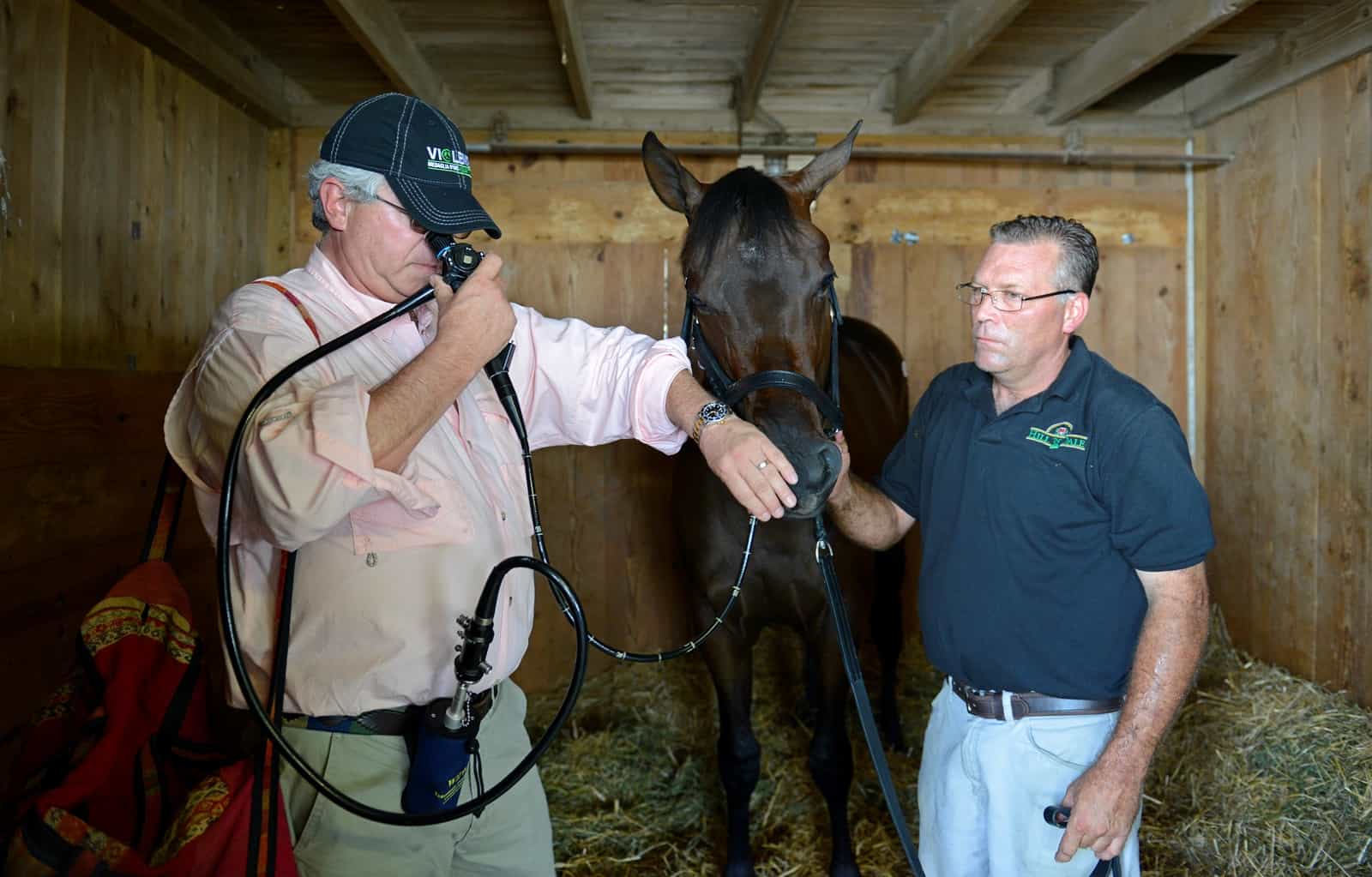Evaluating Airway Function in Horses: How Well Do Vets Agree?

Before buyers raise their hands to bid on Thoroughbred racing prospects at a sale, they’ve had their veterinarians evaluate the horses head to toe. This includes using videoendoscopy to assess the function of the arytenoid cartilages, in the throat, which can make or break airway performance. But how consistent are veterinarians in conducting these evaluations? Could one practitioner be “passing” a horse that another veterinarian “fails”?
Sarah Plevin, BVMS, MRCVS, CVA, Dipl. ABVP, ACVSMR, and colleagues recently conducted a study on the topic, and she presented the results at the 2018 American Association of Equine Practitioners Convention, held Dec. 1-5 in San Francisco, California. Plevin is sports medicine specialist at Florida Equine Veterinary Associates, in Ocala.
One of the most common upper respiratory tract disorders in racehorses is recurrent laryngeal neuropathy, or roaring. This condition involves paralysis of one or both of those arytenoid cartilages, which form either side of the trachea entrance, abducting—or opening—during breathing, resulting in respiratory noise and decreased performance. In North America veterinarians grade these animals ordinally on a 4-point scale, where a Grade 4 indicates paralyzed arytenoid cartilages
Create a free account with TheHorse.com to view this content.
TheHorse.com is home to thousands of free articles about horse health care. In order to access some of our exclusive free content, you must be signed into TheHorse.com.
Start your free account today!
Already have an account?
and continue reading.

Written by:
Erica Larson
Related Articles
Stay on top of the most recent Horse Health news with











